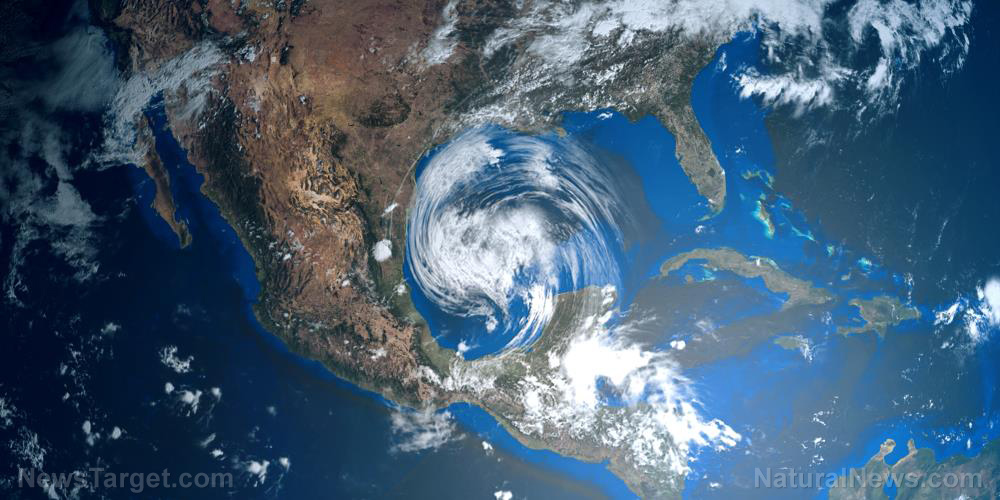Mark Steyn’s “A Disgrace to the Profession: The World’s Scientists in Their Own Words” underscores need for scientific transparency
03/31/2025 / By Arsenio Toledo

- Michael Mann’s 1998 “hockey stick” graph showed a sharp 20th-century temperature rise after centuries of stability, becoming a key symbol of human-caused climate change in the IPCC’s 2001 report.
- The graph faced criticism over its methodology, particularly its use of tree-ring data and principal component analysis, with skeptics like McIntyre and McKitrick arguing it exaggerated recent warming.
- In 2009, leaked emails from climate researchers, including Mann, raised concerns about data transparency and scientific integrity, damaging public trust despite later exoneration.
- While the graph’s prominence faded, its core conclusion—unprecedented modern warming—is still supported by broader research, though its flaws underscore challenges in climate communication.
- The controversy highlights the need for scientific transparency, rigorous debate and clear communication, especially in politically charged fields like climate science.
In 1998, climatologist Michael Mann introduced the world to a graph that would become one of the most iconic — and hotly contested — symbols of the climate change debate.
As chronicled by author Mark Steyn in the book “A Disgrace to the Profession: The World’s Scientists in Their Own Words,” Mann’s graph, known as the “hockey stick” graph, depicted a dramatic rise in global temperatures during the 20th century, contrasting sharply with a millennium of relative stability.
The graph quickly became a centerpiece of the Intergovernmental Panel on Climate Change’s (IPCC) 2001 Third Assessment Report, cementing its role in the climate science discourse. However, its prominence also made it a target of controversy, sparking debates about scientific integrity, methodology and the communication of complex data to the public.
The hockey stick graph emerged from Mann’s efforts to reconstruct Earth’s temperature history over the past 1,000 years using proxy data, such as tree rings, ice cores and historical records. His findings, published in the journal Nature, showed a long-term stable climate until the 20th century, when temperatures rose sharply, resembling the blade of a hockey stick. The graph was interpreted as evidence of human-induced climate change, particularly due to the burning of fossil fuels, which had become a central narrative in global environmental policy.
However, the graph’s acclaim was short-lived. Almost immediately, it came under fire from scientists and statisticians who questioned its methodology and data sources. Among the most prominent critics were Canadian mining engineer Stephen McIntyre and economist Ross McKitrick. They argued that Mann’s use of principal component analysis — a statistical technique — was flawed, leading to an overemphasis on certain tree-ring data that might have skewed the temperature reconstruction. McIntyre and McKitrick also criticized Mann’s reliance on bristlecone pine trees, which they claimed were sensitive to factors other than temperature, casting doubt on the graph’s accuracy.
The controversy escalated in 2009 with the release of the Climategate emails, which revealed internal communications from the Climatic Research Unit at the University of East Anglia. The emails suggested that Mann and his colleagues had been defensive about their work, discussing strategies to counter criticism and even withholding data from freedom of information requests. While some investigations later cleared Mann of misconduct, the incident significantly eroded public trust in climate science and fueled skepticism about the hockey stick graph’s validity.
Despite the furor, the mainstream scientific community continues to claim that the debate surrounding climate change is settled. Furthermore, even though Mann’s data is inherently flawed, scientists still claim that other studies and reports corroborate some of the key conclusions in Mann’s work, namely that recent warming has been unprecedented in the past 1,000 years.
Nevertheless, the hockey stick graph has largely receded from public discourse, overshadowed by other areas of climate research, such as the role of clouds and aerosols. Yet, its legacy endures as a cautionary tale about the challenges of communicating scientific conclusions in a politically charged environment.
The hockey stick graph controversy highlights broader issues in science and society. It underscores the importance of transparency, reproducibility and open debate in maintaining public trust in scientific research.
Moreover, it raises questions about the role of scientists as advocates for their findings and the difficulty of conveying complex data to a diverse audience. As climate science continues to evolve, the lessons of the hockey stick debate remain a vital part of the conversation, reminding researchers and policymakers alike of the need for rigor, clarity and integrity in their work.
In the end, the hockey stick graph was more than just a piece of data — it was a symbol of a broader cultural and scientific struggle. Its story serves as a reminder that science, like society, is an imperfect endeavor, shaped by human ambition, error and the pursuit of truth.
Watch this video discussing Mark Steyn’s groundbreaking investigation into Michael Mann’s flawed data in the book “A Disgrace to the Profession: The World’s Scientists in Their Own Words.”
This video is from the Bright Learn channel on Brighteon.com.
Sources include:
Submit a correction >>
Tagged Under:
A Disgrace to the Profession, Climate, climate change, climate science, data transparency, deception, global warming, hockey stick graph, IPCC, man made climate change, Mark Steyn, Michael Mann, science fraud, scientific integrity
This article may contain statements that reflect the opinion of the author
RECENT NEWS & ARTICLES
COPYRIGHT © 2017 REAL SCIENCE NEWS



















